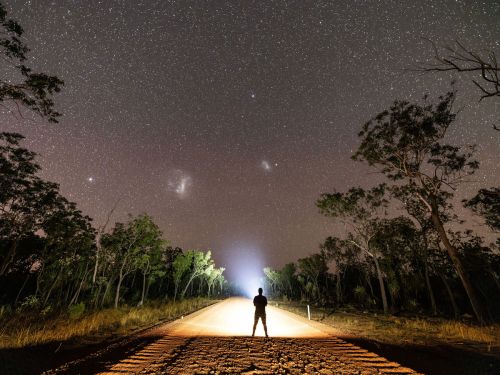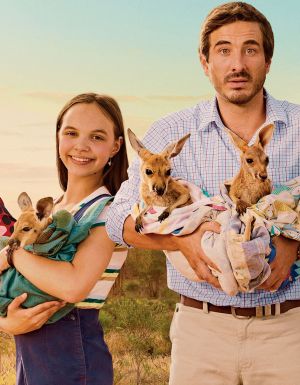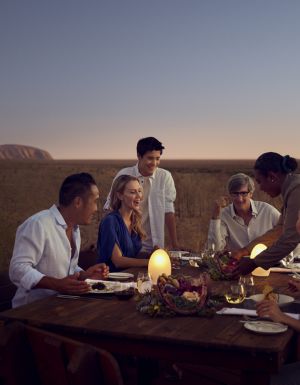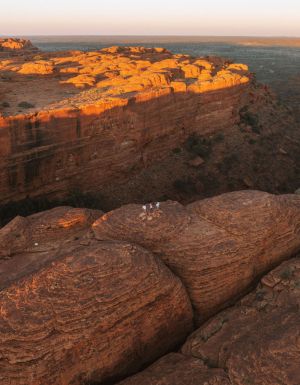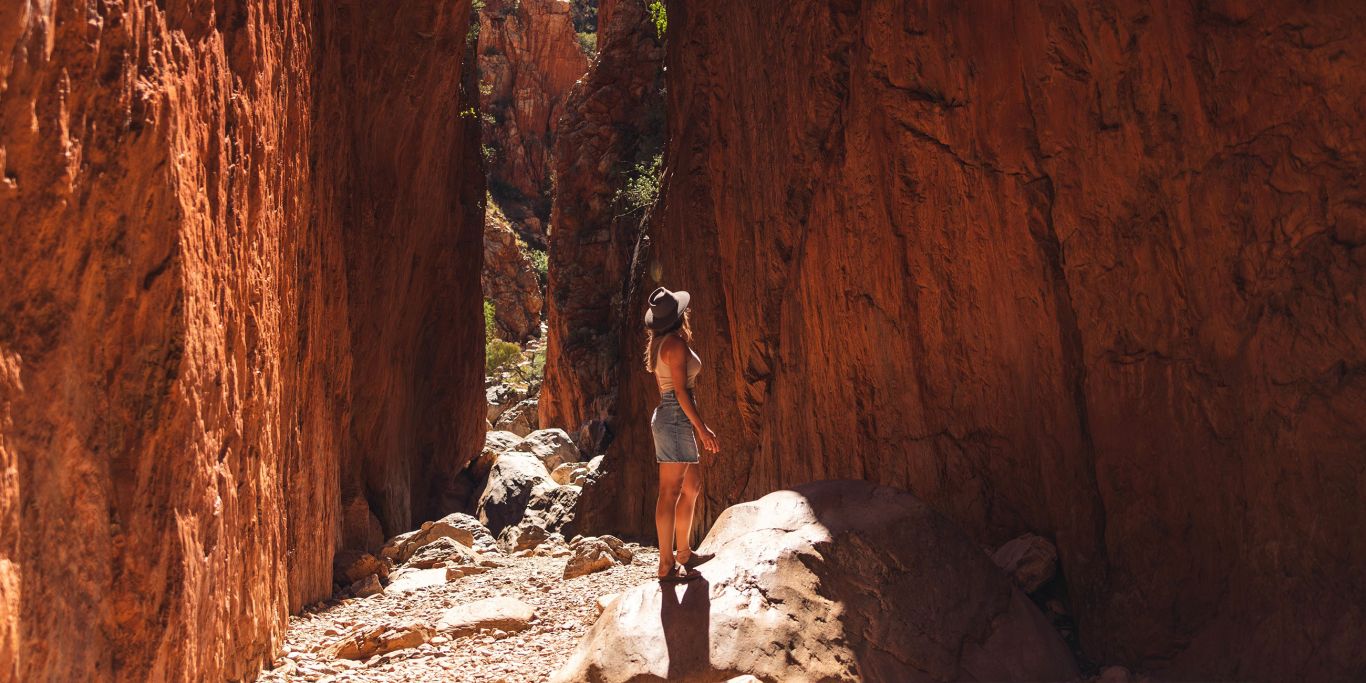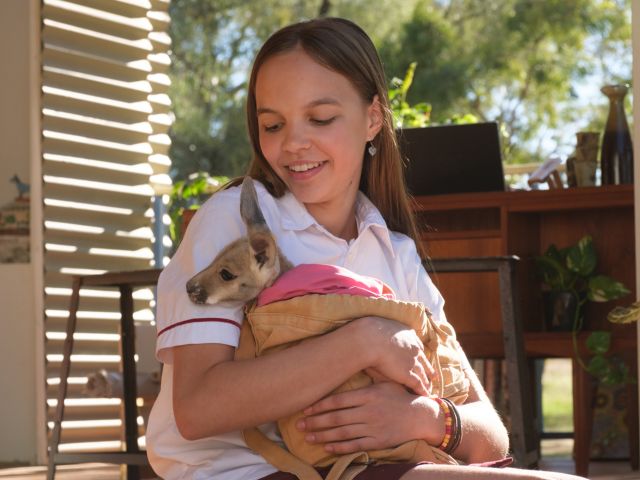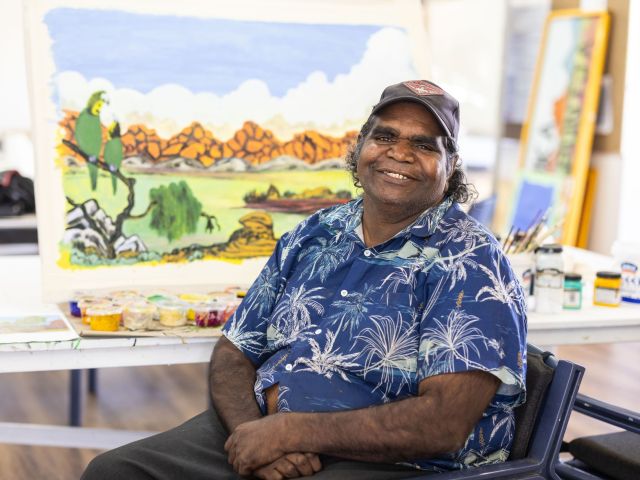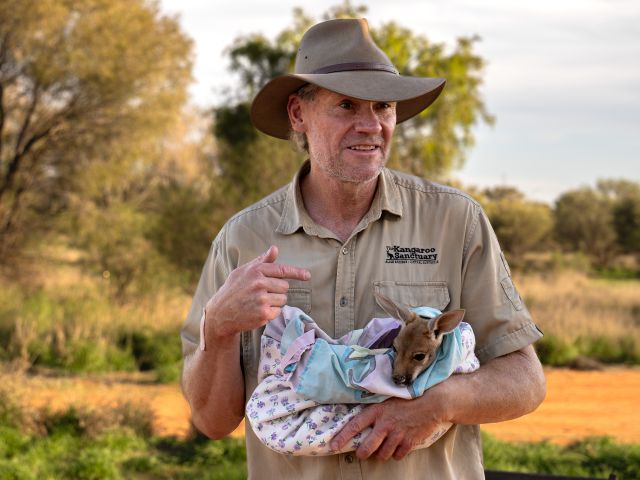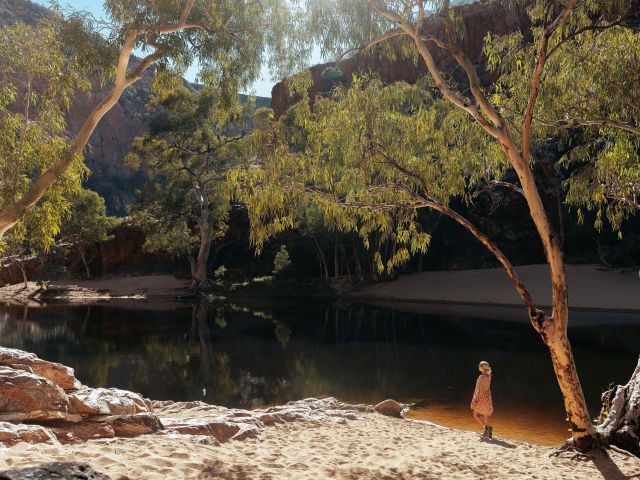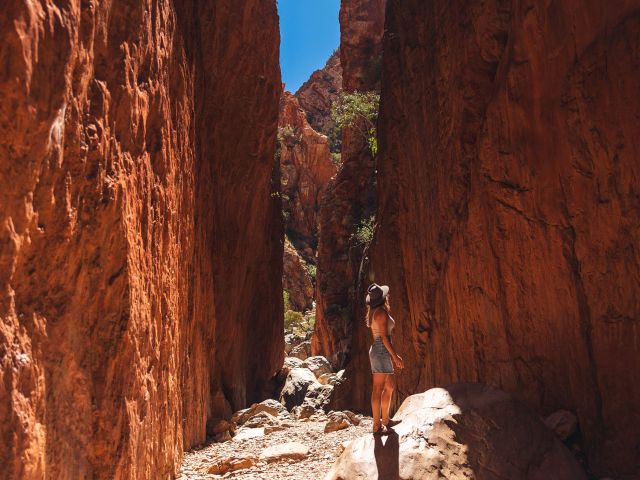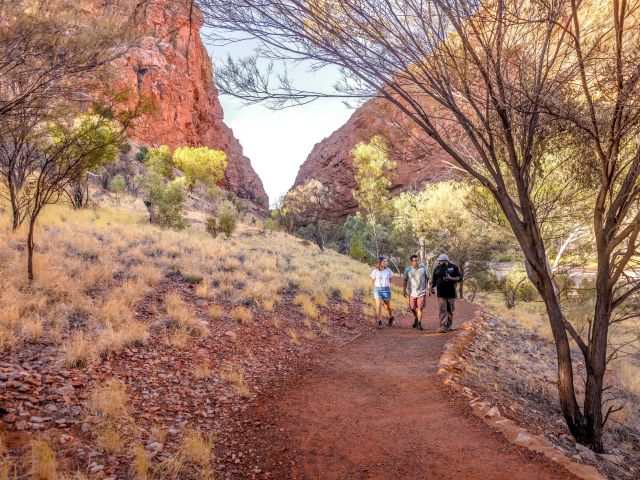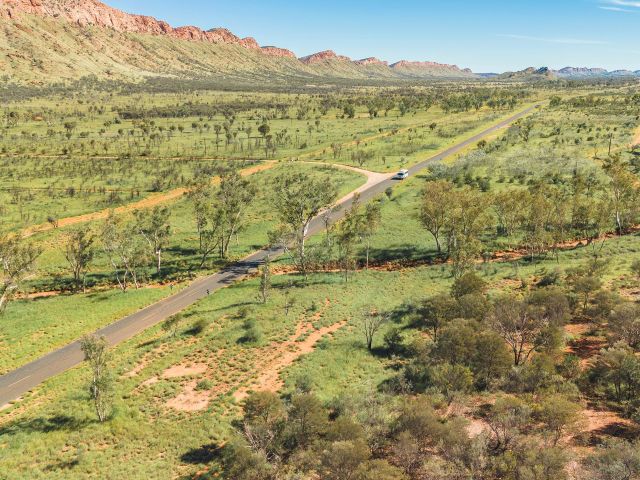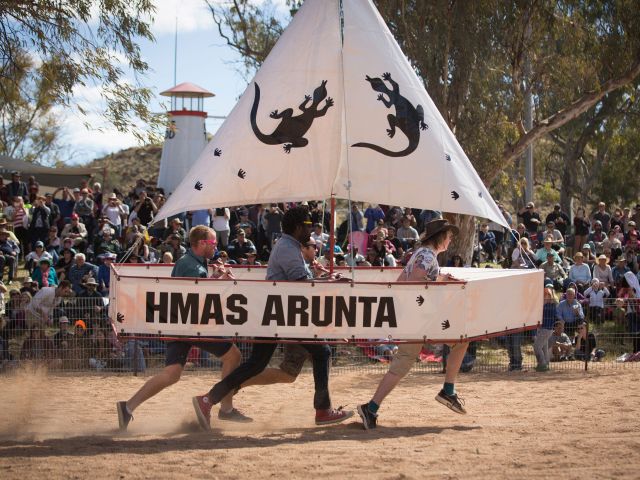The beauty of the desert at night lies in its simplicity, a road trip along the Northern Territory section of the Savannah Way uncovers.
The Savannah Way is a relatively under-the-radar touring route connecting Cairns in Queensland to Broome in Western Australia. It spans about 3700 rutted-road kilometres over unspoilt national parks and barely-there burghs.
We’ve decided to travel along the Northern Territory section of the road trip in a bid to leverage quality over quantity. Long story short, we get it; we witness rivers filled with lurking crocodiles, visit a pub with bras hanging from its ceiling and cruise in boats where barramundi are reeled in.
Why is the Savannah Way better at night?

One aspect of this adventure that caught us off guard, not just once but again and again, was the brilliance of the night. When the sun sets and takes its infernally scorching heat with it, it’s a physical relief you register all the way to your bones.
The atmosphere feels softer and thinner; the sounds and smells are changed. Far from unsettling, the murk highlights a droll peacefulness that suggests darkness is just misunderstood, even as a hidden world bursts to life with a gusto rivalling the one that I left behind in Sydney’s thrumming city centre.
Kicking off from Darwin we collect our campervan and load up with supplies, filling our Lilliputian fridge like we’re headed into the apocalypse but with more snacks and fewer survival instincts. We add some comfort items to our stash, too – extra-plush cushions since we’ll be sleeping mainly in the van, DEFCON-level bug spray, boxes of water, head torches, a pack of UNO cards and citronella candles. And a care package from the bottle-o, because sundowners aren’t just for safari.

Where to stop during the day

The best roads are the back roads in this desert oasis. Our route is meticulously mapped out but leaves spur-of-the-moment opportunity for detours because, sometimes, planning is overrated; it takes us south-west via Highway 1. From Darwin, we follow the Stuart Highway to Daly Waters and then the Carpentaria Highway to Borroloola and Calvert.
One way, it’s about 1200 kilometres, which includes the shuddering, water crossing-laden, coffee-spilling ‘road’ to our most off-grid campsite at working cattle station meets wildlife refuge, Seven Emu Station . Garawa man Frank Shadforth and his family own and operate it and, if my life depended on choosing one place on this trip that floors me with its this-damn-sure-is-the-lucky-country natural grandeur, it’s this one.

I’m not sure I’ve ever been somewhere so remote; we may as well have been on another planet. And really, we kind of are. We’ve driven as far as possible before the track surrenders to the Gulf of Carpentaria.
There’s nothing to do here… but there’s everything to do here. We sit clifftop under the rough-hewn bough shed with our backs to the van and the bull shark-infested water of the serpentine Robinson River gleaming like mercury below us. It’s a primordial soup, that water.
Soon, we notice the unmistakably balletic and sinuous swimming style of other river sentinels; crocodiles glide with their slow and deliberate insouciance, and it’s impossible to look away. I’m not sure if seeing them is more terrifying than not seeing them. Either way, it’s revelatory… since we’re so far up the cliff, that is.
In several areas, that fundamental expectation we all have today – internet connectivity – is simply unavailable, and we find ourselves grateful for that because there’s something to relish at each of our modest camping spots.

We’re forced to keep our faces out of our phones and turn them towards one another. The twilight is so lovely that I feel I could drink it. We listen to the cows lowing their evening songs and frogs barking on the billabongs so loudly and in harmony with one another they perfectly mimic a roller coaster climbing its tracks. We may lack a signal, but connectivity? We have that in spades.
How the darkness reveals the NT’s light

We wear our head torches when the sun goes down. The vast black hole of the Northern Territory desert night is so all-encompassing that it’s hard to even imagine the dawn that’s sure to come. One evening, I’m perched in my chair as usual, listening; my sense of hearing is so strong now, since I can’t see much in the inky black.
I hear the pigs come out. The bats and bandicoots and bilbies. The ground in front of me literally shimmers as though someone has dropped a bag of diamonds from an open fist. Moving closer, I see spiders, a clutter of them to use the collective noun.
They’re translucent and tiny, ducking and weaving and going about their business without much thought to me. Precious gemstones in the dirt, all around us, if we take the time to look. We rush through life, heads down, blind to the wonders beneath our feet.
But if you pause, just for a moment, you’ll see it, too – the beauty in the overlooked, the magic in the mundane, a reminder that the extraordinary is always within reach, waiting for the curious eye to discover it.
Important note: Wildlife is especially active in this region around dusk, dawn and after dark. For your safety and to protect native animals, we strongly recommend avoiding driving at these times. Instead, plan your route so you’re settled at camp before sunset and can enjoy the Savannah Way’s breathtaking night skies from the comfort and safety of your site.
